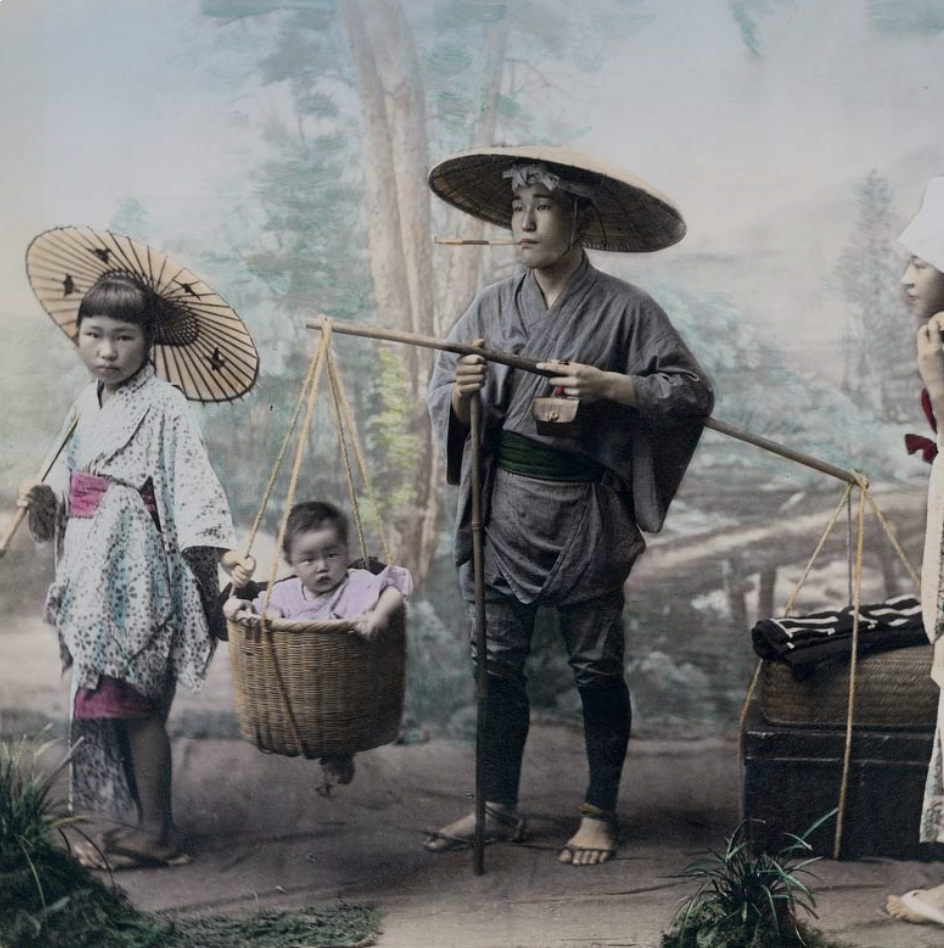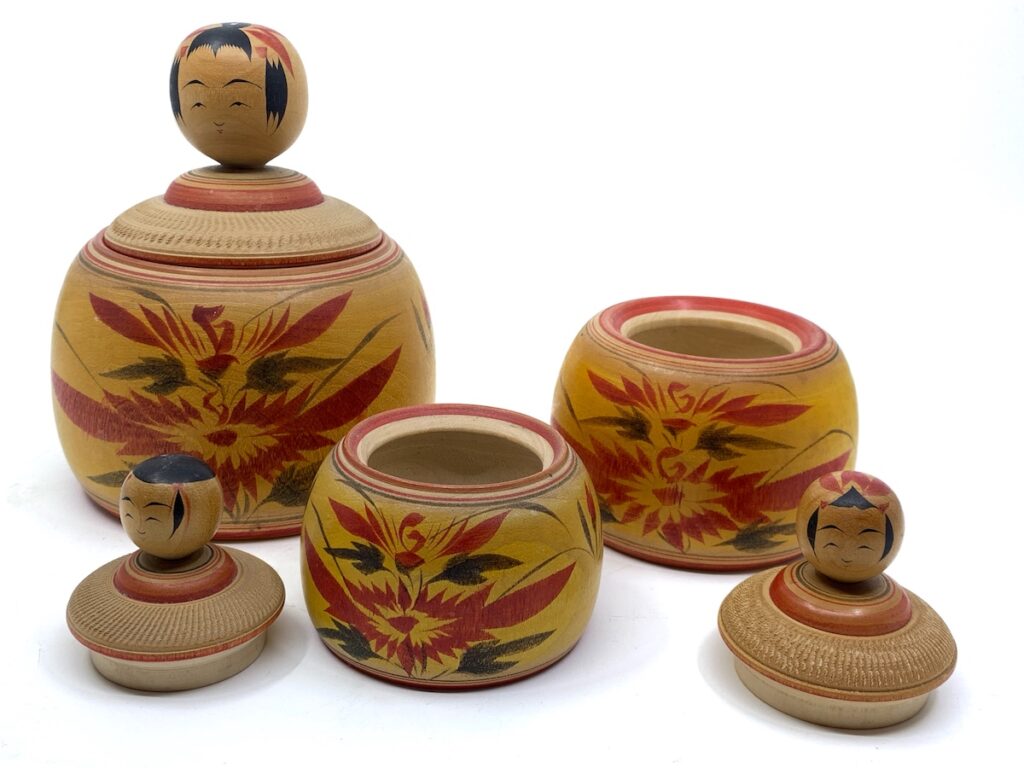Ejiko kokeshi, the child in the basket

In Japan, children have always occupied a privileged place in society, and this is reflected in multiple aspects of daily life and cultural traditions. Considered the bearers of good fortune and blessings, they are not only loved but also respected and valued as an integral part of society. All this is found in traditional crafts, which devote much of their most poetic production to childhood.
The discovery of Ejiko: a special doll
Since we started exploring the world of Kokeshi (born precisely as toys), our curiosity has only grown, leading us to discover more and more fascinating new aspects of these wonderful dolls. Today we want to tell you about the Ejiko, a special kind of Kokeshi that caught our attention because of its history and uniqueness. Hailing from the Tsuruoka region of Yamagata Prefecture, Ejiko represent an interesting evolution of Kokeshi, with roots going back to deep traditions. We are pleased to share with you this “discovery” and the significance of these dolls in Japanese culture.
The origin: from the Izume.ko toy to tradition
The origin of Ejiko comes from a popular toy called Izume.ko (“baby Isume”) doll, which dates back to the early 1910s.
The toy is based on an Isume, a wicker container traditionally used to keep rice warm: farmers would put their babies in baskets during the working season. This way, they could easily carry but also keep an eye on the little ones as they worked in the fields. Small toys were placed in the basket along with the baby to comfort and soothe the mother during the day.
Early versions of the Izume.ko doll consisted of an acorn shell filled with a small doll, or a small version of the woven basket that contained a baby covered with a small piece of cotton. Miniature toys were then tied to the edge of the basket. From these early versions later emerged the Ejiko doll, around the 1920s.

Symbolism and functionality
All Ejiko follow the same basic style, low and round. However, some have a hollow body and a neck and head that serve as a lid. These are called Obunko. The body is often filled with miniature Kokeshi dolls or other small toys.
A unique gift: celebrating birth with Ejiko
We fell in love with them and managed to collect some; they are quite rare. Don’t you also find it a nice gift to celebrate a birth?
We end with this haiku, that fits perfectly:
The voice of children,
Masaoka Shiki (1867-1902)
warm and welcoming,
like the warmth of wood.
